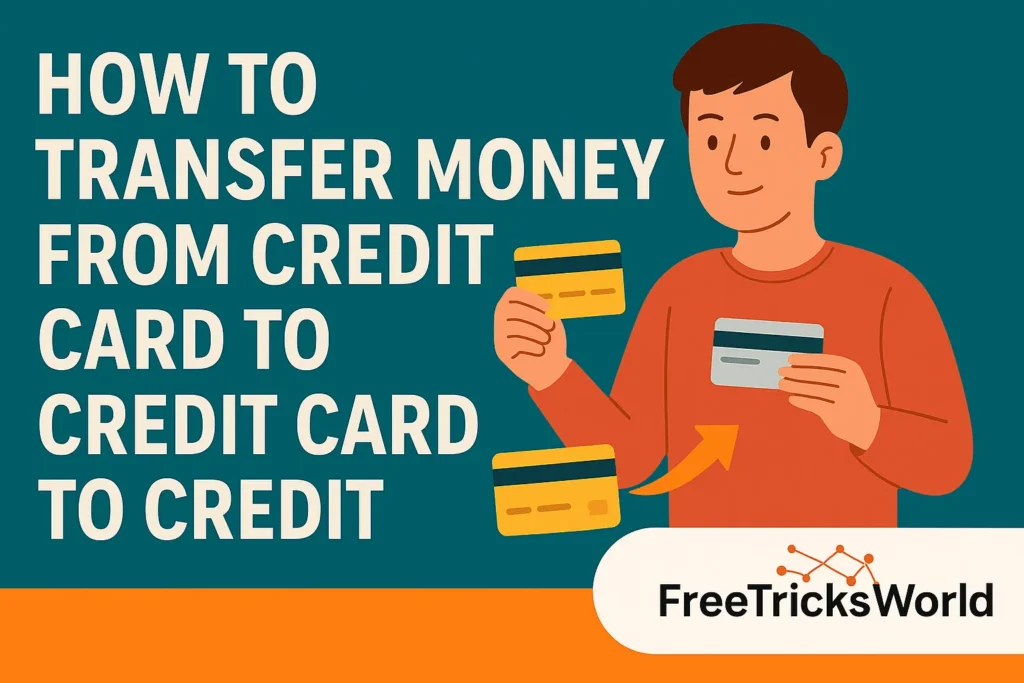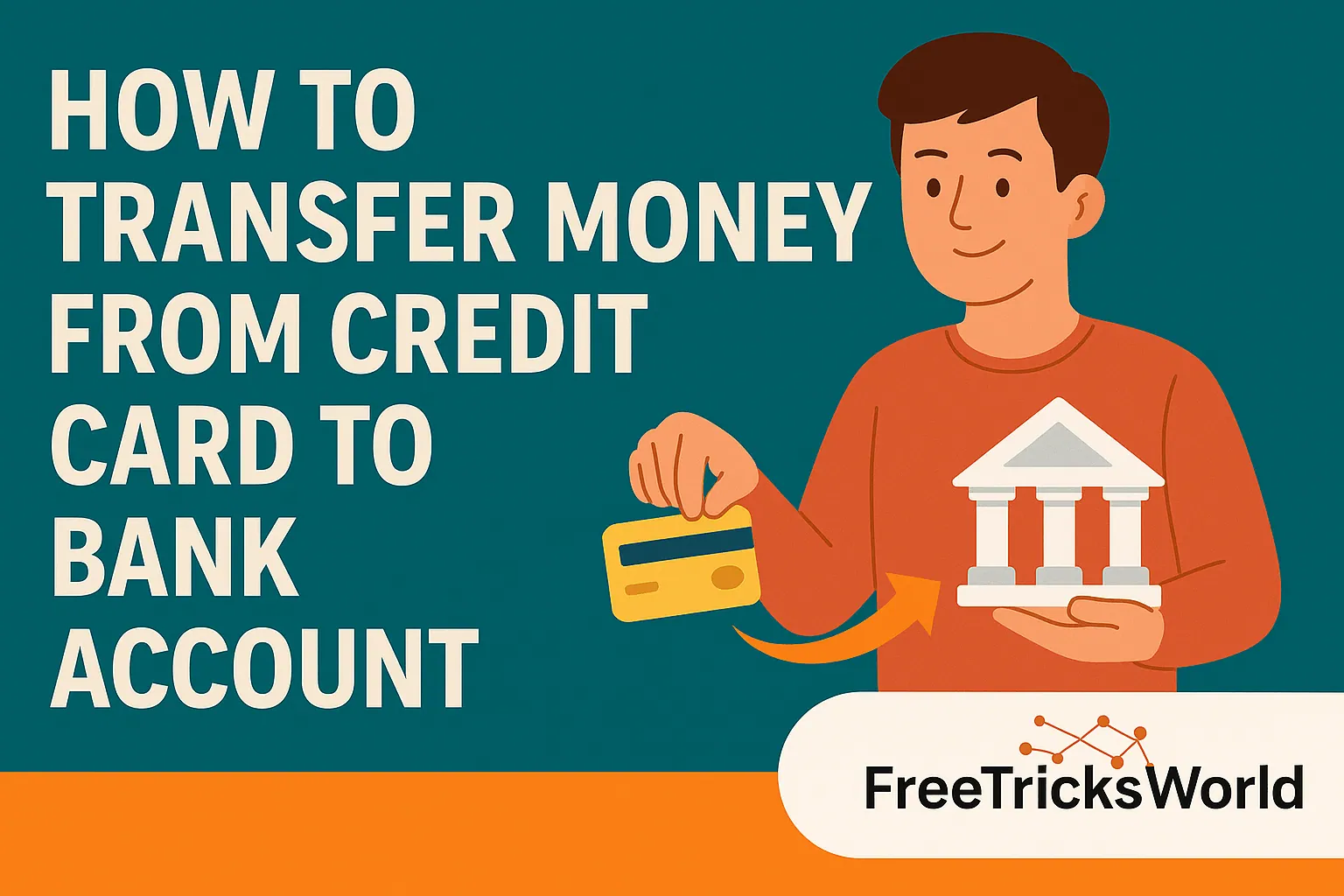How to transfer money from credit card to credit card
Transferring money between credit cards isn’t a straightforward process like moving funds between bank accounts. Credit cards are designed primarily for purchases rather than cash movement, making these transactions complex with significant financial implications. This comprehensive guide explores all legitimate methods, associated costs, and smarter alternatives to help you navigate this financial maneuver responsibly.

Why Transfer Money Between Credit Cards?
While transferring funds directly from one credit card to another isn’t technically possible, consumers often seek this for several reasons:
- Debt consolidation: Moving high-interest balances to lower-rate cards
- Emergency cash access: Accessing funds when bank accounts are depleted
- Promotional offers: Leveraging 0% APR introductory periods on new cards
- Credit optimization: Shifting balances to cards with higher credit limits
Understanding your motivation is crucial because each method carries distinct costs, risks, and impacts on your financial health.
Method 1: Balance Transfers (The Official Approach)
How it works: Balance transfers move debt from one credit card to another, typically to capitalize on lower interest rates. This is the closest “direct” method between cards.
Step-by-Step Process:
- Apply for a balance transfer card: Choose a card offering 0% APR on balance transfers (typically 12-21 months)
- Initiate the transfer: After approval, contact the new issuer online or by phone with:
- Old card account details
- Transfer amount (within your new card’s limit)
- Wait for processing: Transfers take 1-3 weeks to complete
- Repay strategically: Pay off the balance before the promotional period ends
Cost Breakdown:
| Fee Type | Typical Cost | Details |
|---|---|---|
| Balance Transfer Fee | 3%-5% of transferred amount | Charged by the receiving card 78 |
| Post-Promotional APR | 15%-28% variable | Interest after introductory period ends 7 |
| Foreign Fee | 2%-3% | Added for international transfers 11 |
Pros:
- Access to 0% interest periods (saving hundreds in interest)
- Simplified debt repayment with one monthly payment
- Potential credit score improvement through lower utilization ratio
Cons:
- Transfer fees add immediate debt
- Hard credit checks temporarily lower your score
- Risk of higher rates after promotional period
Expert Tip: “Transfer only what you can realistically pay within the 0% period. Otherwise, fees and post-promo interest will negate savings.”
Method 2: Cash Equivalents (The Indirect Route)
When balance transfers aren’t viable, these indirect methods facilitate cash movement:
A. Money Transfer Credit Cards
Process: Some UK/EU cards allow direct transfers to your bank account (must match cardholder name). From there, you can pay another card.
- Fees: 3%-5% transfer fee + higher APR than purchases
- Speed: 1 business day typically
- Best For: Larger amounts with 0% promotional periods
B. Cash Advances
Process: Withdraw cash from Card A via ATM, deposit to your bank, then pay Card B.
- Fees:
- 3%-5% cash advance fee (minimum $10)
- Immediate interest accrual at ~24.99% APR
- Potential ATM fees
- Speed: Instant cash access
- Risk Level: Highest cost method; use only in emergencies
C. Convenience Checks
Process: Use special checks linked to Card A, deposit to your bank, then pay Card B.
- Fees: Typically 3%-5% fee, sometimes with promotional APRs
- Documentation: Requires physical check mailing/deposit
Table: Cash Equivalent Methods Compared
| Method | Best For | Max Cost | Credit Impact |
|---|---|---|---|
| Money Transfer Cards | Planned large transfers | 5% fee + reverting APR | High utilization risk |
| Cash Advances | Immediate emergencies | 5% fee + 25% APR + ATM fees | Severe utilization damage |
| Convenience Checks | Mail-based transfers | 5% fee + possible promo APR | Moderate utilization hit |
Method 3: Third-Party Payment Apps (Proceed with Caution)
Peer-to-peer (P2P) apps enable indirect transfers but trigger cash advance treatment:
Process:
- Link Card A to app (Venmo, PayPal, Cash App)
- Send money to yourself or trusted contact
- Transfer received funds to your bank
- Pay Card B from your bank account
Fee Analysis:
- App Fees: 2.9%-3% when funding with a credit card
- Credit Card Fees: Cash advance fees (3%-5%) + immediate interest
- Instant Transfer Fees: 1%-1.5% to move money quickly to your bank
Dangers:
- Double fees (app + cash advance)
- No grace period – interest starts daily accrual immediately
- Potential violation of app terms of service
Expert Warning: “Apps like Venmo or PayPal treat credit card-funded payments as ‘cash equivalents,’ subjecting you to cash advance fees and higher APRs that quickly erase any convenience.”
The Hidden Costs Beyond Fees
1. Interest Rate Ramifications
- Cash advances and money transfers incur higher APRs than purchases (often 5-10 points higher)
- No grace period: Interest starts accruing immediately, unlike purchases
2. Credit Score Damage
- Utilization Spike: Transferring money increases balances, raising your credit utilization ratio (30% of FICO score) 6
- Multiple Inquiries: Applying for new cards triggers hard inquiries (10% deduction per inquiry)
- Risk Indicators: Frequent cash advances signal financial distress to lenders
3. Long-Term Debt Traps
- Minimum payments on transferred balances extend repayment for years
- Post-promotional rates can exceed 25%
- Fees compound if balances aren’t paid in full
Smarter Alternatives to Consider
Before transferring between cards, evaluate these options:
- Personal Loans:
- Lower interest rates (5%-15% vs. credit card APRs)
- Fixed repayment timeline
- No collateral required
- Debt Management Plans:
- Credit counseling agencies negotiate lower rates
- Single monthly payment
- Potential fee waivers
- Balance Transfer Cards with Direct Deposit:
- Cards like the Chase Slate Edge® allow money transfers to your bank at balance transfer rates (saving 3%-5% versus cash advance fees)
- Home Equity Lines (HELOCs):
- Rates around 7%-9% (secured by home equity)
- Tax-deductible interest in some countries
- Higher risk but lower cost for substantial debt
- Emergency Funds or Family Loans:
- Zero interest options
- Flexible repayment
- Preserve credit score
Critical FAQs: What You Must Know
Q: Can I transfer directly from Card A to Card B?
A: No financial institutions allow direct card-to-card transfers. All methods involve intermediaries like banks or apps.
Q: Do balance transfers affect credit scores?
A: Yes – initially through hard inquiries and utilization spikes, but responsible repayment improves scores long-term.
Q: What’s the cheapest method overall?
A: Balance transfer cards with 0% intro APR and 3%-5% fees beat cash advances (3%-5% fee + 25% APR) or app transfers (double fees).
Q: Can I transfer more than my credit limit?
A: Never. Transfers can’t exceed available credit on either card.
Q: Are international transfers possible?
A: Yes via specialized services like Remitly or Wise, but expect 3%-7% in fees and poor exchange rates.
The Responsible Transfer Checklist
Before initiating any transfer:
- Calculate total costs: Include all fees + projected interest
- Verify card terms: Check for money transfer/cash advance permissions
- Check limits: Confirm available credit on both cards
- Develop a repayment plan: Budget to clear debt before high rates kick in
- Explore alternatives: Consult credit counselors at non-profits like StepChange or National Debtline
Key Insight: “Transferring money between credit cards should be a rare emergency tactic, not routine behavior. Frequent transfers indicate unsustainable debt requiring professional intervention.”
Conclusion: Strategic Moves Over Quick Fixes
Transferring money between credit cards is financially viable only in specific scenarios:
- Consolidating debts via balance transfers during 0% intro periods
- Accessing emergency cash when cheaper options are exhausted
- Leveraging limited-time promotional offers
However, the high fees, credit score impacts, and debt risks demand extreme caution. Always prioritize building emergency savings, negotiating directly with creditors, or seeking accredited debt counseling before resorting to card transfers. Used sparingly and strategically, these methods can provide temporary relief—but permanent financial health requires disciplined spending, saving, and borrowing habits.
Also Read Similar Articles






